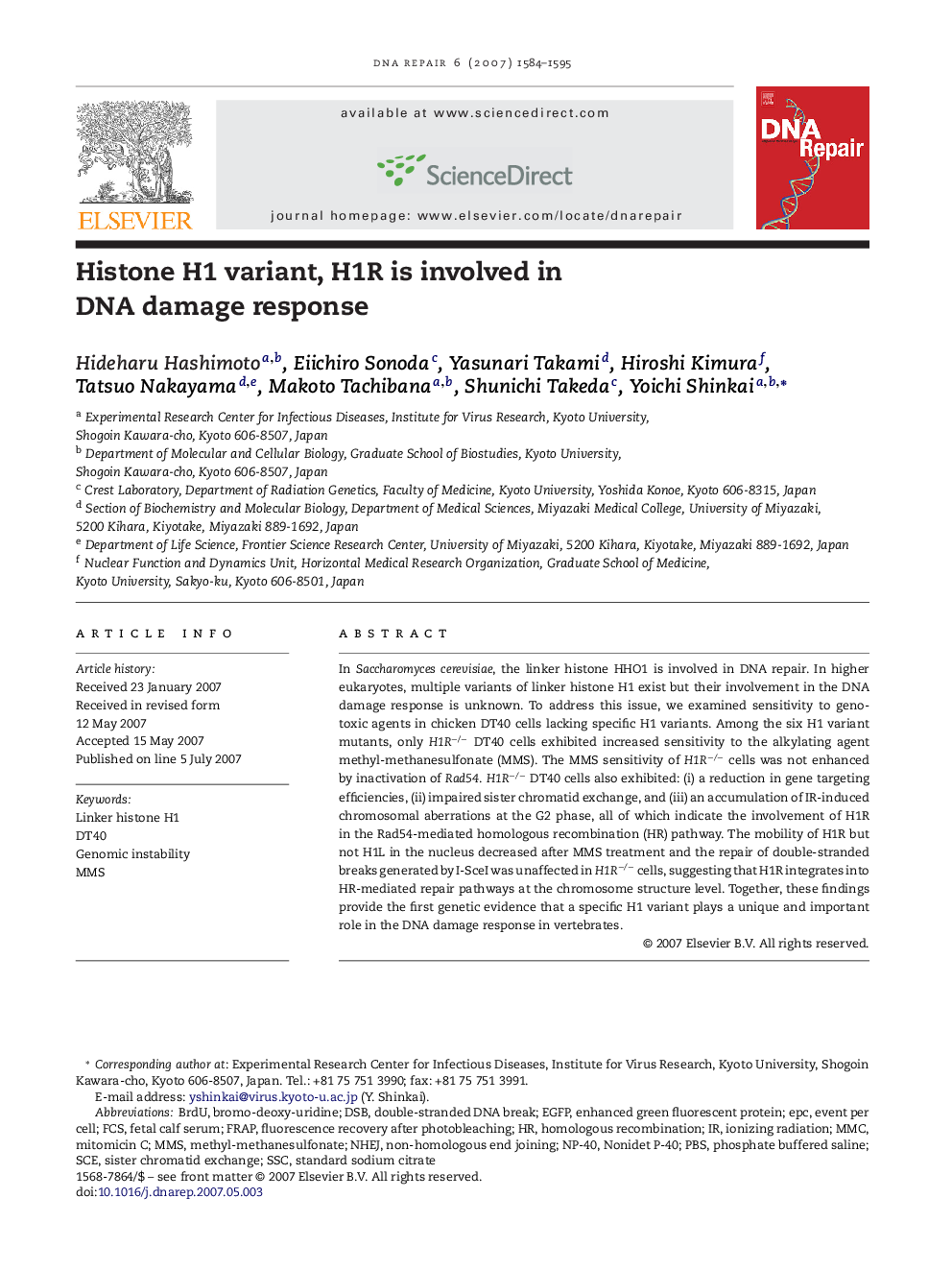| Article ID | Journal | Published Year | Pages | File Type |
|---|---|---|---|---|
| 10823542 | DNA Repair | 2007 | 12 Pages |
Abstract
In Saccharomyces cerevisiae, the linker histone HHO1 is involved in DNA repair. In higher eukaryotes, multiple variants of linker histone H1 exist but their involvement in the DNA damage response is unknown. To address this issue, we examined sensitivity to genotoxic agents in chicken DT40 cells lacking specific H1 variants. Among the six H1 variant mutants, only H1Râ/â DT40 cells exhibited increased sensitivity to the alkylating agent methyl-methanesulfonate (MMS). The MMS sensitivity of H1Râ/â cells was not enhanced by inactivation of Rad54. H1Râ/â DT40 cells also exhibited: (i) a reduction in gene targeting efficiencies, (ii) impaired sister chromatid exchange, and (iii) an accumulation of IR-induced chromosomal aberrations at the G2 phase, all of which indicate the involvement of H1R in the Rad54-mediated homologous recombination (HR) pathway. The mobility of H1R but not H1L in the nucleus decreased after MMS treatment and the repair of double-stranded breaks generated by I-SceI was unaffected in H1Râ/â cells, suggesting that H1R integrates into HR-mediated repair pathways at the chromosome structure level. Together, these findings provide the first genetic evidence that a specific H1 variant plays a unique and important role in the DNA damage response in vertebrates.
Keywords
Related Topics
Life Sciences
Biochemistry, Genetics and Molecular Biology
Biochemistry
Authors
Hideharu Hashimoto, Eiichiro Sonoda, Yasunari Takami, Hiroshi Kimura, Tatsuo Nakayama, Makoto Tachibana, Shunichi Takeda, Yoichi Shinkai,
